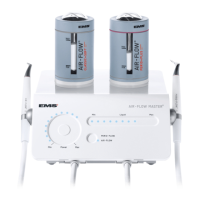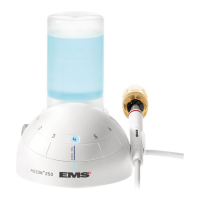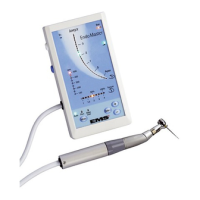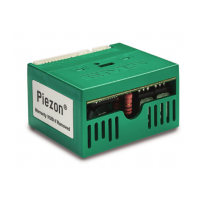8
Rincer la bouche du patient, avant traitement pendant un
minimum de 30 secondes avec une solution nettoyante, permet
de réduire la transmission microbienne au cours du traitement.
Nous vous recommandons d’appliquer de la Vaseline
®
sur les
lèvres du patient pour éviter le dessèchement et les gerçures
des commissures des lèvres.
Les rouleaux de coton stoppent le flux de salive, écartent les
lèvres et protègent les gencives.
TRAITEMENT
Positionner la pompe à salive pour une aspiration sublinguale.
Utiliser la grosse canule d’aspiration de votre unit dentaire
pour évacuer le mélange air/poudre dévié par la dent traitée.
ainsi dirigée de manière optimale vers la buse.
Technique de travail
Dirigez la buse uniquement vers l’émail dentaire, du sillon
gingival vers le bord incisif de la dent. Respectez une distance
de 3 à 5 mm.
Vous pouvez faire varier l’angle entre la buse et la dent de
30 à 60 degrés. Plus l’angle est plat, plus la surface nettoyée
est étendue.
Pendant le traitement, dirigez la canule d’aspiration vers le
à l’angle incident.
d’un emphysème provoqué par l’irruption d’air dans le système
diriger la buse directement contre la gencive.
Réalisez le traitement en effectuant de petits mouvements
après le traitement en réglant le débit d’eau au maximum.
seconds with a cleaning solution will greatly prevent bacteria
development during the treatment.
Application of Vaseline
®
becoming dry and chapped.
The cotton rolls stop the flow of saliva, part the lips and protect
the gums.
TREATMENT
Position the pump for sublingual aspiration.
Use the high-speed evacuator of your dental unit to evac-
uate the air/powder mixture deviated by the treated tooth.
The handpiece and the high-speed evacuator must be
handled by the same operator. The high-speed evacuator is
thus directed in an optimal way towards the nozzle.
Working Technique
Direct the nozzle strictly towards the surface of the tooth.
Respect a distance of 3 to 5 mm.
You can vary the angle between nozzle and tooth from 30
to 60 degrees. The flatter the angle, the larger the area cleaned.
During treatment, direct the high-speed pump towards the
identical to the angle of incidence.
of air into the soft tissue spaces. It is strongly recommended that
the operator never direct the nozzle directly at the gum tissue or
into the gingival sulcus.
During treatment, make small circular motions.
Finally after the treatment polish all dental surfaces by setting
the water flow rate to the maximum.
m a ch o ire 3
ma c h o ire 3
ma c h o ire 3
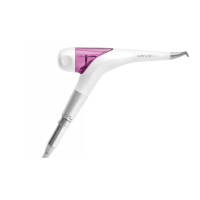
